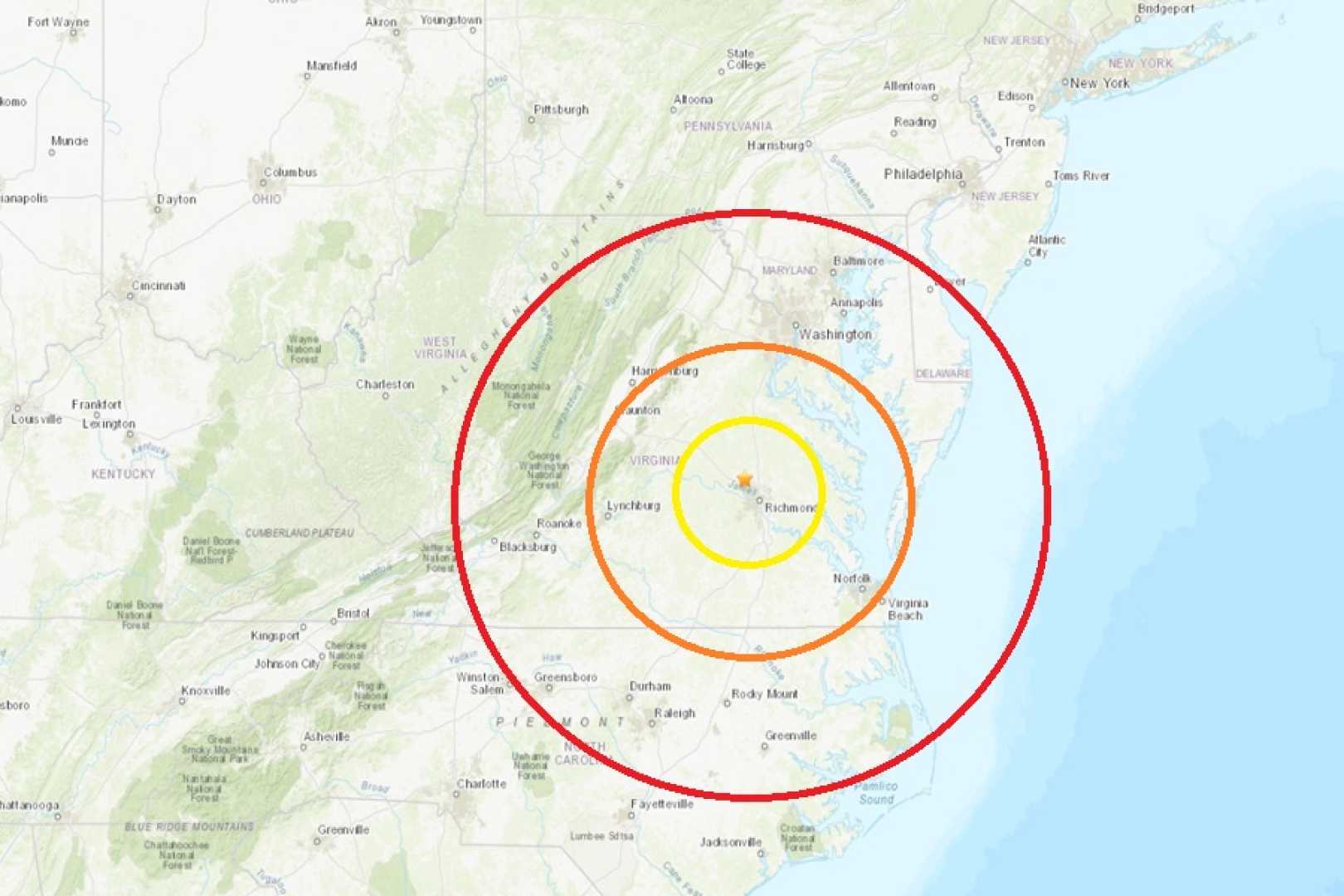News
East Coast Earthquake: Virginia Shaken by 2.8 Magnitude Temblor

GLEN ALLEN, Va. — A 2.8 magnitude earthquake struck northwest of Glen Allen, Virginia, on Tuesday, reminding residents that the East Coast is not immune to seismic activity. The quake occurred just before 5:30 p.m. EST, approximately 6 miles northwest of Glen Allen and 13 miles northwest of Richmond, according to the U.S. Geological Survey (USGS).
Residents in Richmond and Henrico County reported feeling the tremors, though no damage or injuries were reported, local outlet WTVR confirmed. The event echoed memories of the 2011 Mineral, Virginia, earthquake, which became the most widely felt quake in U.S. history despite its moderate 5.8 magnitude.
The 2011 quake, centered about 50 miles from Richmond, caused over $200 million in damage, including to iconic structures like the Washington Monument and the National Cathedral in Washington, D.C. Its impact was felt across a vast area due to the unique geological characteristics of the East Coast, where older, denser rocks allow seismic waves to travel farther than in the West.
“East Coast earthquakes can affect a larger area than those of the same magnitude in the West,” the USGS explained in a 2012 report. “The rocks here are older and more rigid, allowing seismic energy to propagate more efficiently.”
While earthquakes are less frequent in the eastern U.S. compared to the West, they are not uncommon. Every state east of the Mississippi River has experienced quakes, some significant enough to cause damage. For example, a 6.0 magnitude quake near Boston in 1775 caused serious destruction, and an 1886 earthquake in Charleston, South Carolina, with a magnitude of 6.8 to 7.2, devastated much of the city.
The 2011 Virginia earthquake also triggered landslides 150 miles away and produced aftershocks that continued for years, with about 4,000 recorded over a decade. East Coast quakes often generate higher-frequency shaking, which can be more damaging to structures.
“Damaging earthquakes do not strike the eastern U.S. often, but the potential consequences of not understanding and planning for such events could be severe,” USGS Director David Applegate warned in 2021. “The next significant earthquake on an eastern U.S. fault may not occur for hundreds of years, yet there is a small chance it could happen at any time.”
Globally, seismologists record about 900,000 earthquakes annually, most occurring along tectonic plate boundaries far from the eastern and midwestern U.S. However, the East Coast’s geological history ensures that even smaller quakes can have outsized impacts, making preparedness a critical concern.












